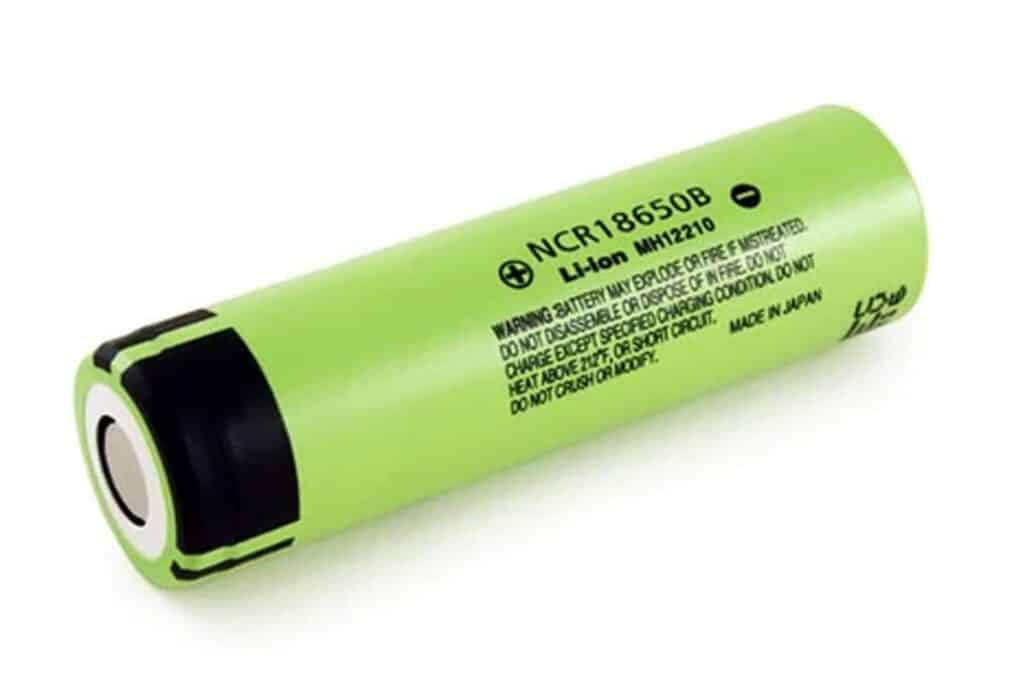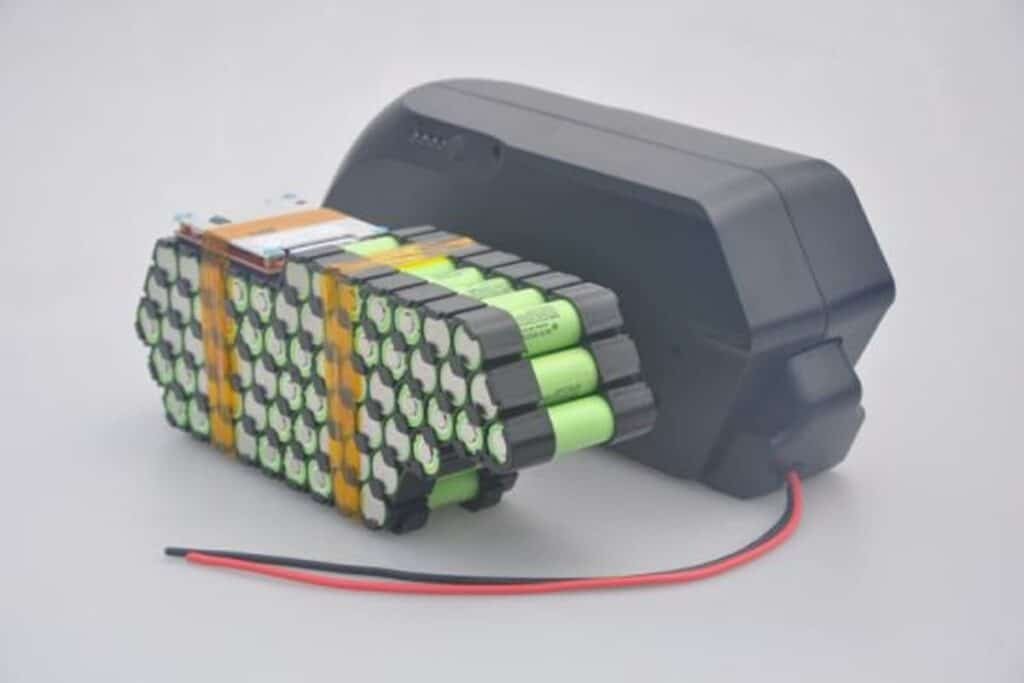Any electric vehicle’s most costly and riskiest component is its battery pack. In the case of e-bikes and other LEVs (Light Electric Vehicles), the battery cost may account for as much as half of the whole price.
If the battery isn’t powerful enough, then the eBike won’t be able to go very far before needing to be recharged.
Because the battery plays such an important role in determining the price and performance of an eBike, we’ve written this article to enable both consumers and distributors to better understand eBike batteries so that they can either increase battery life or sales volume as a result of the information provided.
Before we begin this discussion, let’s explore what words and measurements the industry use to define batteries.
Terminology For Batteries
Voltage
Differential electric potential between two sites is what we mean by voltage. Each electron has its own unique energy level as it leaves the box.
When describing how quickly electrons travel, voltage is employed as a measure of speed.
The voltage of an e-bike battery usually ranges from 36 to 48 volts..
Capacity
The term “battery capacity” refers to the amount of charge that can be held in the battery. It is the greatest quantity of energy that can be retrieved from a battery given a particular set of circumstances, either in watt-hours (Wh) or in the more complex metric of kilowatt-hours or ampere-hours (Ah) (Ahr).
The total quantity of electrons we can get from a battery is the true measure of its capacity. When it comes to the range and torque of your electric bike, your battery’s Ah value is important.
The standard eBike battery capacity is between 8 and 15 Ah.
Energy
Watt-hours (Wh) are the units of measurement for the total amount of battery energy.
Unlike voltage, which describes how much energy each electron produces, Watt-hours describes the total amount of energy we get from all the electrons. Batteries are measured in Watt-hours, which is a quantity that represents the total amount of useable energy that can be extracted from the battery as a whole.
Simply multiplying the voltage [V] of the battery by the capacity [Ah] of the battery gives us the battery’s watt-hours of energy.
A total of 360 watt-hours of energy could be obtained from a 36-volt, 10-amp-hour battery. In order to get double the energy out of this battery (720 Wh), you may double either its capacity (36V 20Ah) or its voltage (72V 10Ah), or you may choose a middle ground between the two.
It’s time for a few concluding thoughts on eBike batteries. When this is reported in kilo-Watt-hours [kWh], which is simply the standard Wh output divided by 1,000 (720 Wh = 0.72 kWh), you will often see this written as a decimal number.
Certain individuals refer to a battery’s watt-hours as its “capacity”. This isn’t accurate in the strictest sense… A better term would be “energy storage capacity.” Amp-hours, as explained above, are often referred to as “capacity.”
Battery Cell

Batteries are composed of cells, which are the smallest units and are made up of four main components: cathode, anode, electrolyte, and separator. The performance of electric cars is heavily dependent on the battery cell’s properties.
Battery Packs

In order to provide the power needed by your eBike system, a pack of batteries is constructed from multiple smaller batteries that have been carefully packed.
Like your AA and AAA cells, there are two types of cells: cylindrical (such as the AA and AAA batteries) and prismatic (similar to the one in your phone). Among eBike battery packs, the most popular cell type is the 18650.
BMS – Battery monitoring system
Batteries made of lithium are lightweight and long-lasting, but you must use them within their limitations. If you want your battery pack to last a long time, you need a BMS (Battery Monitoring System). It acts as a buffer between the battery and the power lines, keeping tabs on all the cells’ voltages and, in most cases, the current flowing through them. The BMS should act if any restrictions are exceeded by securely shutting the power down. Ideally, the BMS will do nothing but shut you down if you ride until you utilize all the battery’s energy and avoid harm to the cells.
E-bike Battery Buying Guide: What To Look For?
Price
In terms of batteries, we’ve found that cost and quality go hand in hand. Ultimately, you’ll have to spend more money if you’re going to compromise on quality.
Product Details From The Manufacturer
Paying a premium for Panasonic, LG, and Samsung’s high-quality cells is a worthwhile investment in the battery market. To be safe, don’t buy an e-bike from a seller who doesn’t have or offer information on the cell maker.
Cell Chemistry
The best batteries for electric bicycles are lithium-ion (Li-ion). However, lead-acid batteries, which are three times heavier than their Li-ion counterparts, are substantially less expensive.
Li-ion offers a variety of cell chemistries to choose from. For electric motorcycles, the three most common batteries are NMC, LCO, and LI-FePO4 (Lithium Iron Phosphate) (LFP).
Size, weight and shape
When picking a pack, consider these three factors. If it doesn’t fit and is too heavy, you won’t be able to enjoy it on your bike. If you’re looking for a pack that has everything you need, you’ll probably be disappointed.
In order to avoid having to carry or place your battery on a bike rack or a flight of steps, many eBikers make the mistake of wanting a huge battery. This is OK until you need to attach it to your bike.
As we’ve discovered, finding the smallest and lightest battery pack that does the job is the key to a perfect configuration. Having a pack with twice as much energy as you require may seem like a smart idea, but this may prove detrimental on even the longest of trips.
Battery Position
The battery pack of an eBike might be difficult to install. As a result of the many options, some packs were placed in between the wheels, which provides the greatest possible distribution of weight and rider comfort, while others were placed on a rear rack or saddlebags, which is handy but may have a detrimental impact on handling. Shape and weight are key factors here!
The finest eBike batteries, in our opinion, will be produced using Panasonic, LG, or Samsung cells using LFP or NMC chemistry.
Types of eBike Batteries
Here are some options to consider:
LEAD (GEL) BATTERIES
It takes approximately eight to ten hours for a dead battery to fully charge, which has decreased over time as people have become more aware of the dangers of lead batteries.
Additionally, lead batteries have lower capacity and manufacturing costs because of the quality of the compounds used.
LITHIUM-ION BATTERY (LI-ION)
Lithium-ion batteries, which are now the most common on the market, will be found in newer or more recent electric motorcycles.
As a result, lithium-ion batteries have the lightest and most energy-dense batteries on the market, and as a result, they have the greatest possible range and lifespan.
LIFEPO4
It is possible to use lithium iron phosphate (LiFePO4) in a broad variety of applications and in any climate because of its wide temperature operating range. There are several advantages to using this type of battery: extended life, charge efficiency, and no maintenance, as well as the fact that it can be charged rapidly.
Despite the fact that they are fairly new to the market, they are excellent long-term investments because of their lengthy lifespan.
Range of eBike Batteries
A battery pack’s range is determined by the quantity of energy it contains and is expressed in Watt-Hours (Wh)
The battery capacity in Amp-hours is multiplied by the battery voltage in Volts to arrive at the watt-hours.
Let’s say that, on average, it takes 30Wh of energy to go one mile.
12 miles per charge is what you can expect with a 10Ah, 36V battery.
For example, 10Ah x 36V = 360Wh, which equals 12 miles of driving.
To get a more accurate idea, subtract 15% from the manufacturer’s recommended range and use this inflated value as your true range.
The Lifespan Of An eBike Battery
Most electric bike batteries last between three and five years before needing a new one. Batteries, on the other hand, degrade over time since they are constantly being charged. As you use an eBike more frequently, its battery will require more frequent recharges. This process is known as a charge cycle.
In addition, there are a number of factors that might impact the lifespan of a battery, such as how often the battery is recharged:
- Operating conditions: charging and discharging temperatures
- Battery charging rate: the rate at which your battery charges
- Voltage while charging: the voltage of the battery while it is charging
- Depth of discharge (DoD): This is the voltage at which the battery has been discharged.
Manufacturers also have a tendency to overestimate their batteries, making promises such as some batteries can be recharged at least 1,000 times. However, fewer of them would display the actual test data.
Here’s How You Can Prolong The Life Of Your E-Bike Battery
The fastest way to destroy your battery is to leave it in a hot car while it is charged. Moving your e-bike inside, in a cooler environment, and draining the battery as quickly as possible is a good idea if it’s 80 degrees outdoors. To avoid an explosion, never keep your batteries close to a heating device, like a radiator or boiler.
As much as possible, recharge your battery at room temperature.
The slower the charge rate, the better when looking for an e-bike battery charger. Charging your battery @ 14 Ah/2-Amps = 7-hours means you have a 2-Amp charger and a 14 Ah battery pack. You may expect your battery pack to last longer with this gentle, moderate charge. Avoid charging faster than two hours for a full charge.
When it comes to picking the ideal battery for your e-bike, there’s a lot to consider, and there isn’t a single answer. Nonetheless, if I was looking for an e-bike battery right now, here’s what I’d look for: If you’re not going to use the battery for an extended period of time, it’s best to keep it at around a third of its full charge, whether it’s an NMC or an LFP.
Water and electricity do not get along. In other words, if you’re going to clean your bike, remove the battery first. Make sure the dump cloth is rung out properly to clean the battery and then dry it promptly with a new towel if it gets filthy during your trip. It should never, ever be submerged in any liquid.
When Fully Charged, How Long Does An eBike Battery Last?
The length of time you can get out of a full charge of an eBike battery depends on the sort of battery you have. Your eBike’s power also plays a role in determining how far you can go.
There are a number of elements that can affect how long you can get out of a single charge of an eBike battery. Your e-battery bike’s charge life depends on a variety of factors, including the following:
- Size of the battery
- Age of the battery
- Throttle and pedal assist settings
- Gear selection
How Do You Decide Between A Fixed And Detachable eBike Battery?
The advantages of using a fixed battery

This type of battery is ideal for those who prefer a sleeker-looking bike.
These batteries make bikes lighter, which is always a plus.
Furthermore, if you keep your bike in a room or garage that’s warm (but not hot) and close enough to a charger, they’re a good choice.
The disadvantages of using a fixed battery
The bike must accompany you whenever you intend to recharge.
Advantages of a detachable battery

The battery may be replaced in a matter of seconds, rather than having to wait for the bike to charge.
They’re more compact, quicker to replace, and cheaper.
Final Toughts
Like motor and controller, the battery is one of these three key parts of an eBike to determine how long your bike can last on a single charge. There always has been a trade-off between the performance of range and power, the more powerful your eBike has, the lower the range.
Ask yourself when and where you are gonna use the eBike before making a buying decision, which will come in handy and help you save a bunch of money by choosing a relatively smaller battery with a 15 to 20 miles range as opposed to 30 to 50 miles that you would probably never reach it in your daily commuting.







